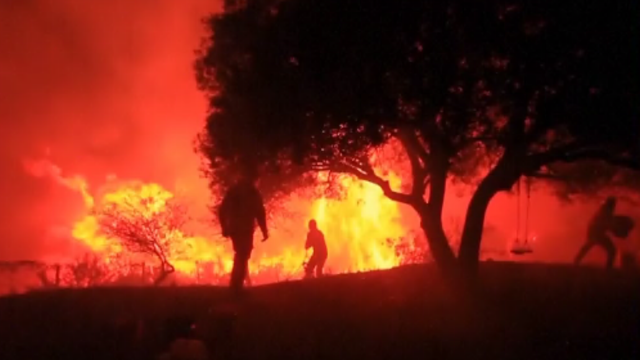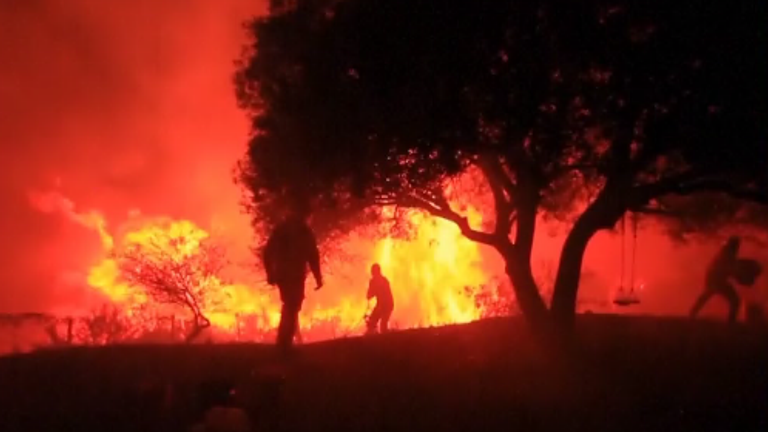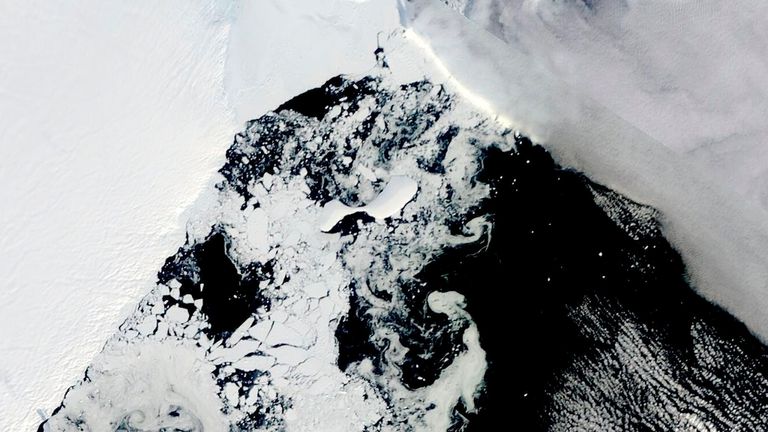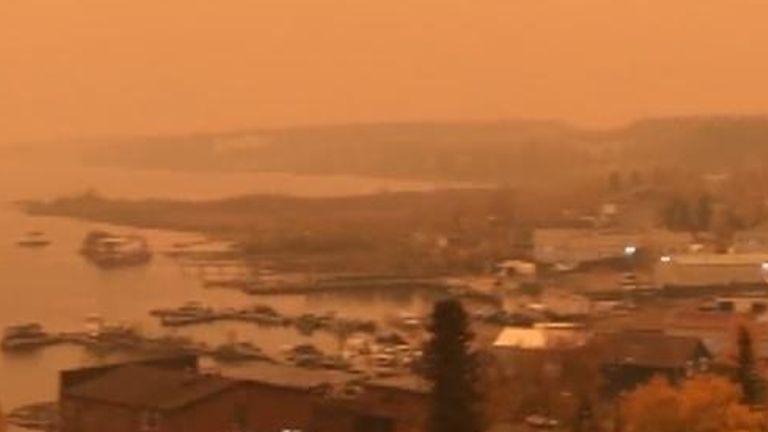Extreme weather events were “off the charts” in 2023, according to a new report aiming to send a “red alert” to the world about the need for action on climate change.
Global temperatures broke records “by a clear margin” last year, United Nations climate scientists have said.
The World Meteorological Organisation (WMO) said in its annual report that the air and ocean were the warmest yet in modern times in 2023, with records shattered for both the rise in sea level and the retreat of glaciers and Antarctic ice.
Heatwaves, floods, droughts, wildfires and rapidly intensifying tropical cyclones caused “misery and mayhem, upending everyday life for millions and inflicting many billions of dollars in economic losses”, the WMO adds in its State of the Global Climate report.
But the WMO also said the rapid roll-out of renewable energy offered a “glimmer of hope” that the worst impacts of global warming can be avoided.
According to the report, the global average surface temperature reached 1.45C above pre-industrial levels last year, just below the 1.5C threshold that scientists believe will result in accelerating climate chaos.
The temperature was lifted slightly – and temporarily – by the natural El Nino weather event over the Pacific Ocean, but it still shattered the previous record of 1.29C, set in 2016.
Celeste Saulo, WMO secretary-general, said: “The WMO community is sounding the red alert to the world.
“Climate change is about much more than temperatures.
“What we witnessed in 2023, especially with the unprecedented ocean warmth, glacier retreat and Antarctic sea ice loss, is cause for particular concern.”
Two-metre sea level rise would be ‘catastrophic’
More than 90% of the world’s oceans were gripped by a marine heatwave at some point in the year, with serious impacts expected on coral reefs, which are vital nurseries for marine life.
Glaciers experienced extreme melting, particularly in North America and Europe. Those in the Swiss Alps have lost around 10% of their ice in just two years.
And the extent of ice covering Antarctica’s coastal sea shrank by an area equivalent to the size of France and Germany compared to the previous record, set in 2022.
Melting ice, and oceans expanding in the heat, drove up sea levels.
The rate of rise over the last 10 years has more than doubled compared to the decade between 1993 and 2002.
Professor Jonathan Bamber, director of the Bristol Glaciology Centre at the University of Bristol, said: “Sea level rise is one of the most pernicious and certain consequences of global heating.
“Our own research indicates that, if greenhouse gas emissions continue unabated, there is a small chance that we could experience up to a two-metre rise by 2100.
“This would truly be catastrophic for civilisation with the potential to displace around a tenth of the population of the planet.”
Read more:
2023 was world’s hottest year on record
Are bigger cars a growing issue?
Mice have overrun a remote island
A year of ‘off the charts’ weather
Extreme weather events were once again a feature of the year.
Tropical cyclone Mocha in May was one of the most intense ever seen in the Bay of Bengal with 1.7 million people fleeing to safety.
Southern Europe and North Africa endured extreme heat in July, with Agadir in Morocco reaching 50.4C.
And Canada’s wildfire season was the worst on record with almost 15 million hectares of forest destroyed.
Dr Kevin Collins, senior lecturer of environment and systems at the Open University, said the report was a significant milestone.
“It is too easy to say this is just more of the same,” he said.
“This report shows that many of the key measures such as sea ice, level and temperatures, and extreme weather events such as storms and droughts, were ‘off the charts’ for 2023.”
‘Renewables are humanity’s best hope’
But the report adds all is not lost.
The roll-out of renewable energy in 2023 surged by 50%, or 510 GW, the fastest increase in capacity in two decades.
The WMO is optimistic that the clean energy goal set at COP28 to triple renewables by 2030 is within reach.
Click to subscribe to ClimateCast with Tom Heap wherever you get your podcasts
Professor Cameron Hepburn, environmental economist at the University of Oxford, said: “Renewables, combined with storage, offer humanity’s best hope of reducing our emissions to safe levels.
“The faster we transition to using them, the more money we save the global economy, whilst insulating ourselves from the damaging impacts of volatile fossil fuel markets.
“The WMO’s stark findings should provide policymakers with all the incentive they need to double down on investments into renewable energy.”













![“It’s hard to say goodbye” – Christian Atsu’s wife composes emotional tribute song for him [Video]](https://ghananewss.com/storage/2023/05/Christian-atsu-and-wife-100x75.jpeg)








